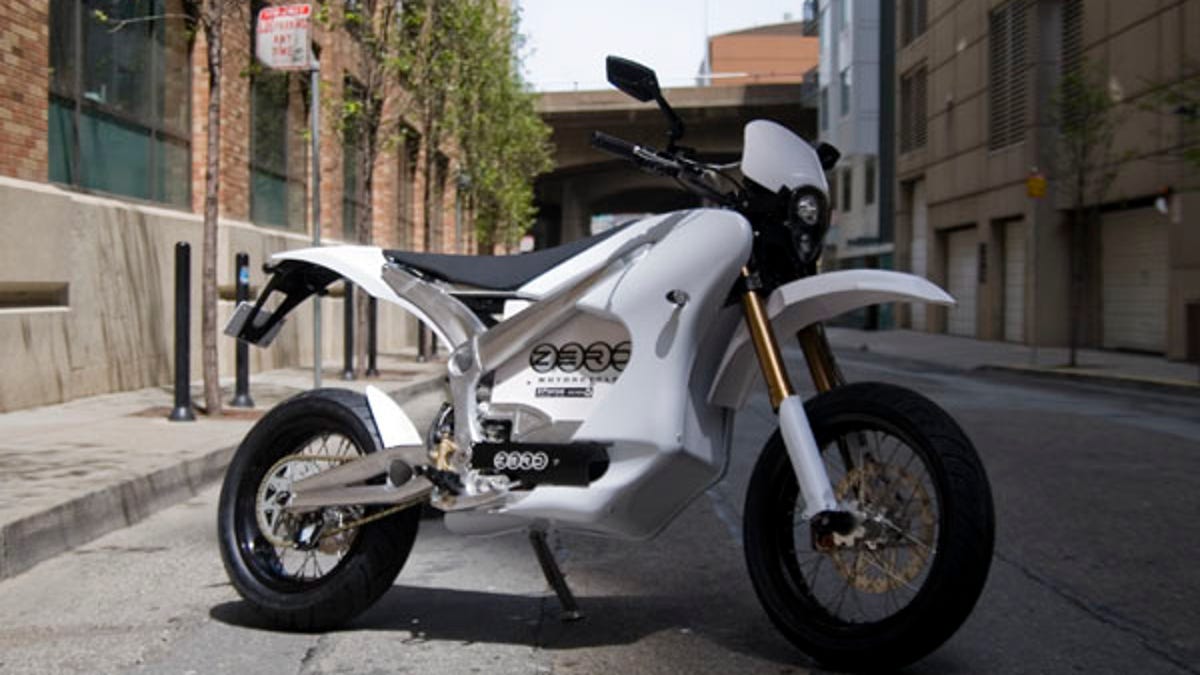Zippy electric motorcycle comes at a price
A CNET News reporter tries out the new electric Zero S, which costs much more than its gas equivalent, but could save you--and the environment--in the long run.

The Zero S electric motorcycle is impressive, but be careful with the throttle--it accelerates superfast from a standing start--and keep in mind that it weighs only 225 pounds.
Those are the initial observations of this first-time rider, who took the street model made by Santa Cruz, Calif.-based Zero Motorcycles out for a spin.
It's an odd feeling to twist the throttle and feel the powerful acceleration (62.5 pound-feet of torque) and still hear no sound except a slight clanking from the chain, not yet lubricated on this pre-production vehicle. Making tight turns is a little tricky, as there's no clutch (and no gears). But once you get used to it, it's just like an ordinary street motorcycle.
That's the point. In contrast with Zero's earlier off-road model Zero X, which is not intended for road use, Zero S is made for daily use, such as commuting or making trips up to 60 miles, which is the maximum range on a single charge (complete charging takes 4 hours on 110 volts).
According to Zero Motorcycles CEO Gene Banman, the Zero S is the first in its class ready to ship. Competitors would be the Strada from Swiss Quantya, X Rider from Xtreme Green Products, and the VX1 from Vectrix Electronics.
But the Zero S is the only typical street bike among them, and it's also the most powerful of the four, with 31 horsepower.
Still it's not the Tesla of motorcycles. Maximum speed averages 60 mph, though it can reach 70 mph, making it less practical for highway use.
Going to work with no local emissions might ease your environmental scruples. Measured on the U.S. electricity grid, Banman estimates the Zero S releases just an eighth of the total carbon dioxide of a gas motorcycle. But it comes at a price. Zero S ships at $9,950, roughly $4,000 more than an equivalent 250 cc gas motorcycle. Direct competitors include the Honda 230M ($5,400) and the Yamaha WR 250X ($6,200).
Considering that the cost per mile for charging is about 1 cent, the Zero S saves about 4 cents a mile compared to a gas motorcycle. Riding 10 miles from home to work and back would require some 20 years of commuting to break even with riding a conventional, gas-powered machine. Once you factor in a U.S. tax credit of 10 percent, and a $1,500 rebate from California Air Resources Board if you live in the state, however, it might take just seven years to break even. But that doesn't include the cost of the 80-pound battery that needs replacement every five years. The battery costs some $5,000, though Banman hopes that will come down drastically in a few years.
It's worth noting that both the motor and the battery are modular and easily exchangeable--a configuration intended to make the Zero S more sustainable in the future development of electric vehicles.
It also makes the motor and battery easier to fit and remove for service on a machine that may be shipped a long way from California.
"We have about a hundred orders for Zero S already that we will ship during May and June. About 40 percent are from California but the rest are spread all over the world," Banman said. He added that the breakthrough for electric vehicles was the lithium ion cells for power tools that reached the market in 2004. He expects a real boom once energy density increases from today's 120-watt hours per kg to 500-watt or 600-watt hours, which is the same performance delivered by gasoline. "At that point there will be a switch. There will be more electrical vehicles than gas vehicles," he said.
A threatening scenario comes from a study commissioned by the World Wildlife Foundation in Germany. It predicts that if electric vehicles become a massive success, when everyone charges their vehicles after returning home, societies will require huge carbon-based electricity production, resulting in higher carbon dioxide emissions per mile from electric vehicles in 2020 than from gas vehicles today.
If that's true, you'd better enjoy your electric motorcycle as soon as possible.